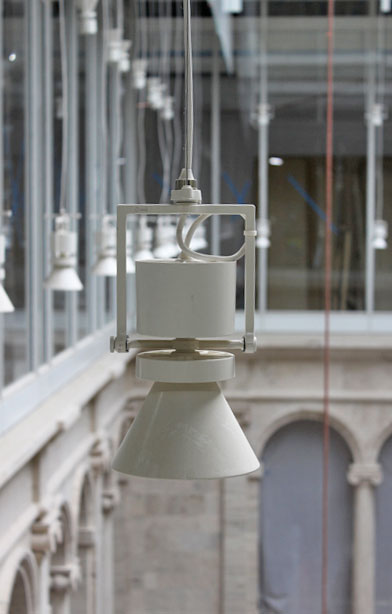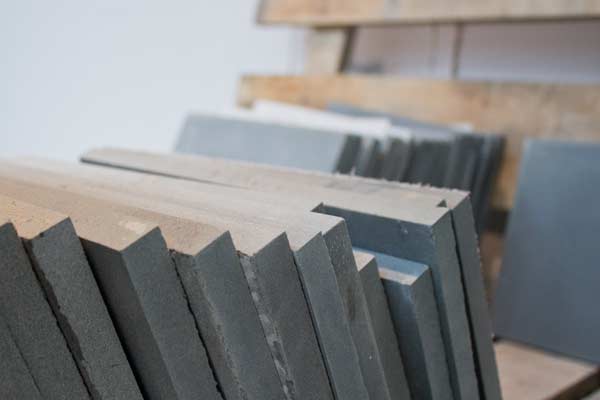Bringing the 86-year-old building up to code is certainly not the only benefit to the renovation and expansion of the Harvard Art Museums. The 204,000-square-foot facility, designed by renowned architect Renzo Piano, will finally open its doors to the public in fall 2014 and will become the newest LEED-certified building at Harvard. The project is designed to follow the university’s sustainability initiatives with the intention of attaining LEED Gold certification. (LEED is a sustainability rating system for buildings, homes, and neighborhoods.) Since the beginning of planning in 2006, the museums, with the support of the Renzo Piano Building Workshop (RPBW) and the Green Building Services (GBS) group from the Harvard Office of Sustainability, have taken a holistic approach to the design, construction, and operations plan for the new facility.
One of the most sustainable aspects of the project is the site itself. The building’s facades and its previously developed site have been reused, reducing urban sprawl and environmental impacts from construction. Also, the site’s proximity to existing infrastructure, such as public transportation, open space, and basic services like markets and libraries, promotes density and community connectivity.
Energy conservation is another important facet of the project. According to the design team, the energy-efficient HVAC equipment, building materials, and design and operation strategies planned will result in a 16.9% energy reduction over a comparable building size and type while still meeting the climate and indoor air quality requirements for the museums’ collections. Further, the museums are considering procuring 35% of its electricity needs through the purchase of Renewable Energy Certificates (RECs). RECs are tradable certificates that represent proof that electricity was produced using renewable resources. One REC is equivalent to one megawatt hour of electricity.
The team is also addressing water-use reduction through a combination of resource-conserving strategies. The bathroom flush and flow fixtures use minimal water and meet the most stringent water conservation standards. Even better, rain water that falls on the roof and landscape will be collected and stored in underground tanks to supplement non-potable water uses, such as flushing toilets. The design team has calculated a water savings of 48.9% over a comparable building baseline.
There are several opportunities during the construction phase to achieve LEED credits and to support the overall goal of a more sustainably built facility. The project’s construction manager, SKANSKA USA Building, Inc., and its subcontractors have developed and implemented an Indoor Air Quality (IAQ) Management Plan for during and after construction that reduces IAQ problems resulting from construction activities and that promotes occupant and worker comfort.
The design team has selected regional and responsibly harvested materials for the project. A minimum of 10% of the total building materials have been extracted and manufactured within 500 miles of the site, and a minimum of 50% of the wood used has been certified by the Forest Stewardship Council (FSC). Demolition and construction waste is also a huge component of any building project, especially from the perspective of resource conservation and recycling. Diverting large amounts of construction waste, such as concrete, wood, metal, glass, is economically sound as much as environmentally sound, due to the savings contractors realize from material reclaiming and recycling. Currently the project is achieving the diversion of over 97% of construction waste, which reduces the impacts on local landfills and promotes material reuse.
Soon the new Harvard Art Museums will be open and the Calderwood Courtyard, galleries, and classrooms will be bustling with visitors, students, and staff. There will be countless opportunities for learning, not just about art, but about the building itself. Occupants and users will be able to learn about the myriad of sustainable features of the new facility through an educational outreach program. Museum-specific web pages, technical case studies, digital slideshows, and interactive utility dashboards will acquaint people with the green building features that make the Harvard Art Museums an environmentally friendly, LEED-certified facility.
Bill Stanton is the Fellow in Facilities and Planning Management for the Harvard Art Museums.





